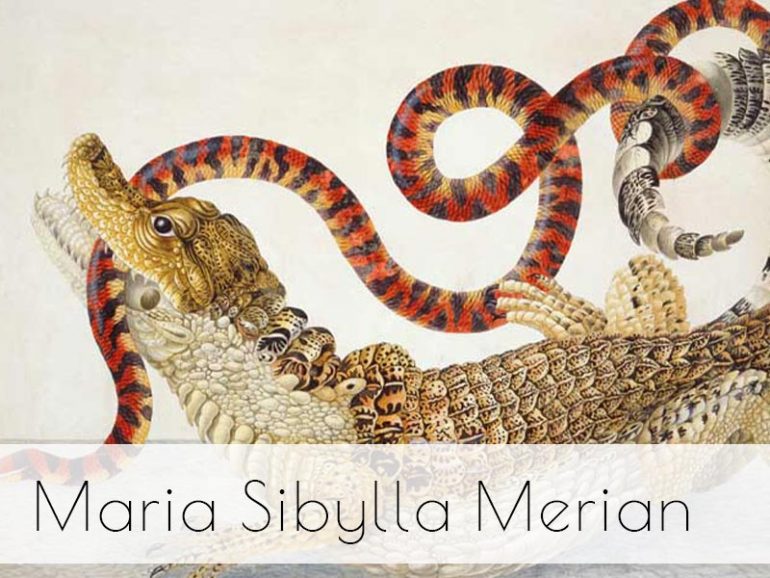Maria Sibylla Merian, a pioneering naturalist and artist of the 17th century, has etched her name into the annals of scientific illustration. Born on April 2, 1647, in Frankfurt, Germany, Merian’s ground breaking work in entomology and botanical art laid the foundation for the study of metamorphosis in insects.
To start this blog post off we have added a painting of Maria by another artists called Jacob Marrel 1679. We felt it would be lovey to see the lady behind the amazing illustrations. We will explores Maria’s life, inspirations, and artistic brilliance through four of her exceptional paintings. We hope you enjoy reading it.
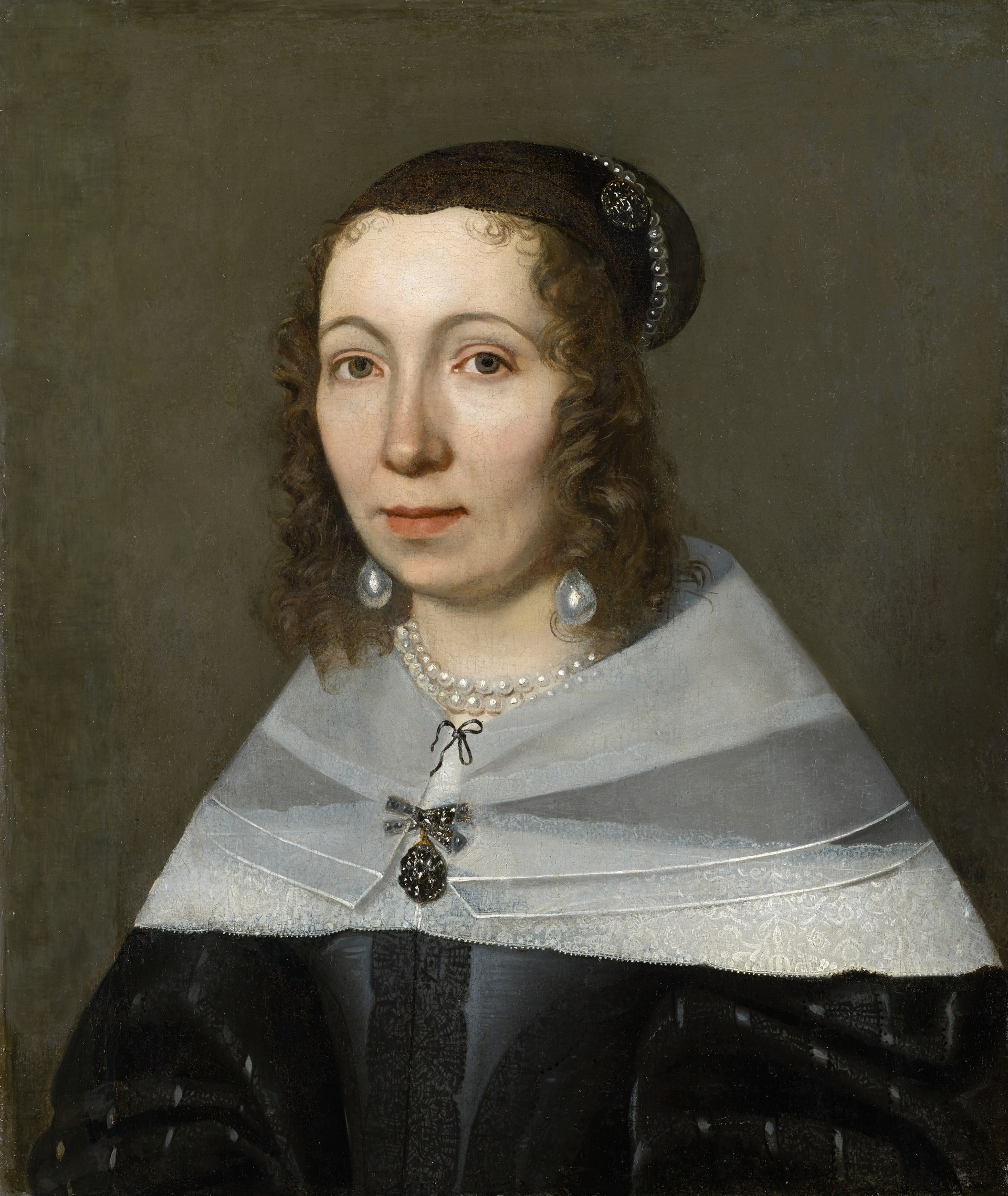
“Metamorphosis Insectorum Surinamensium Plate XLVIII” (1705):
A magnum opus in the world of entomology and natural illustration, “Metamorphosis Insectorum Surinamensium” stands as a testament to Merian’s meticulous observations during her journey to Suriname. Published in 1705, this extensive work features detailed illustrations of the life cycles of various insects and plants, showcasing Merian’s ground breaking approach to scientific illustration. Her keen eye for detail and dedication to accuracy made this collection a cornerstone in the study of entomology.

“Caterpillar, Chrysalis, and Butterfly with Passionflowers” (c. 1702-1703):
This intricate painting, currently housed at the J. Paul Getty Museum in Los Angeles, captures the stages of metamorphosis in butterflies against a backdrop of passionflowers. Merian’s use of watercolour and gouache on vellum showcases her skill in rendering the delicate textures and vibrant colours of both insects and plants. The composition beautifully merges the scientific and artistic aspects of her work, offering a visual feast for viewers.
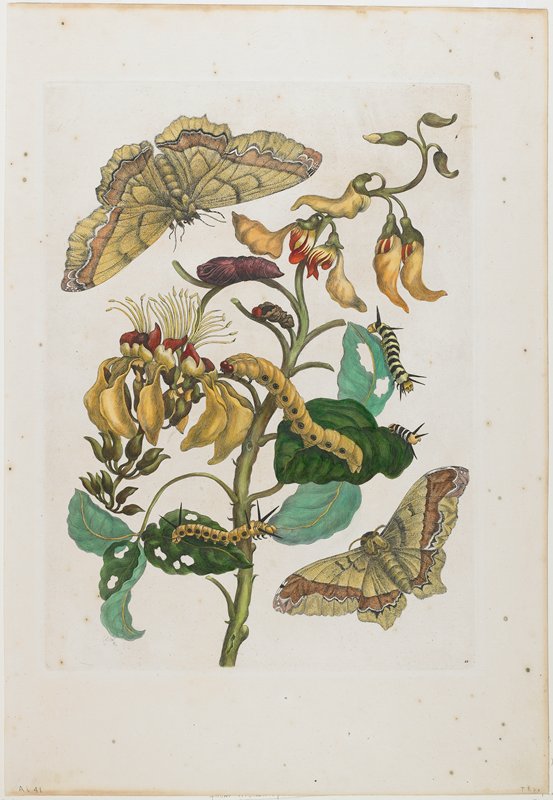
“Study of a Hyacinth” (c. 1675-1680):
Merian’s fascination with the natural world extended beyond insects to include meticulous botanical studies. “Study of a Hyacinth,” displayed at the Rijksmuseum in Amsterdam, is a testament to her ability to capture the essence of plants with scientific precision and artistic grace. The use of watercolour and gouache on vellum allows Merian to convey the velvety texture and vibrant hues of the hyacinth in exquisite detail.
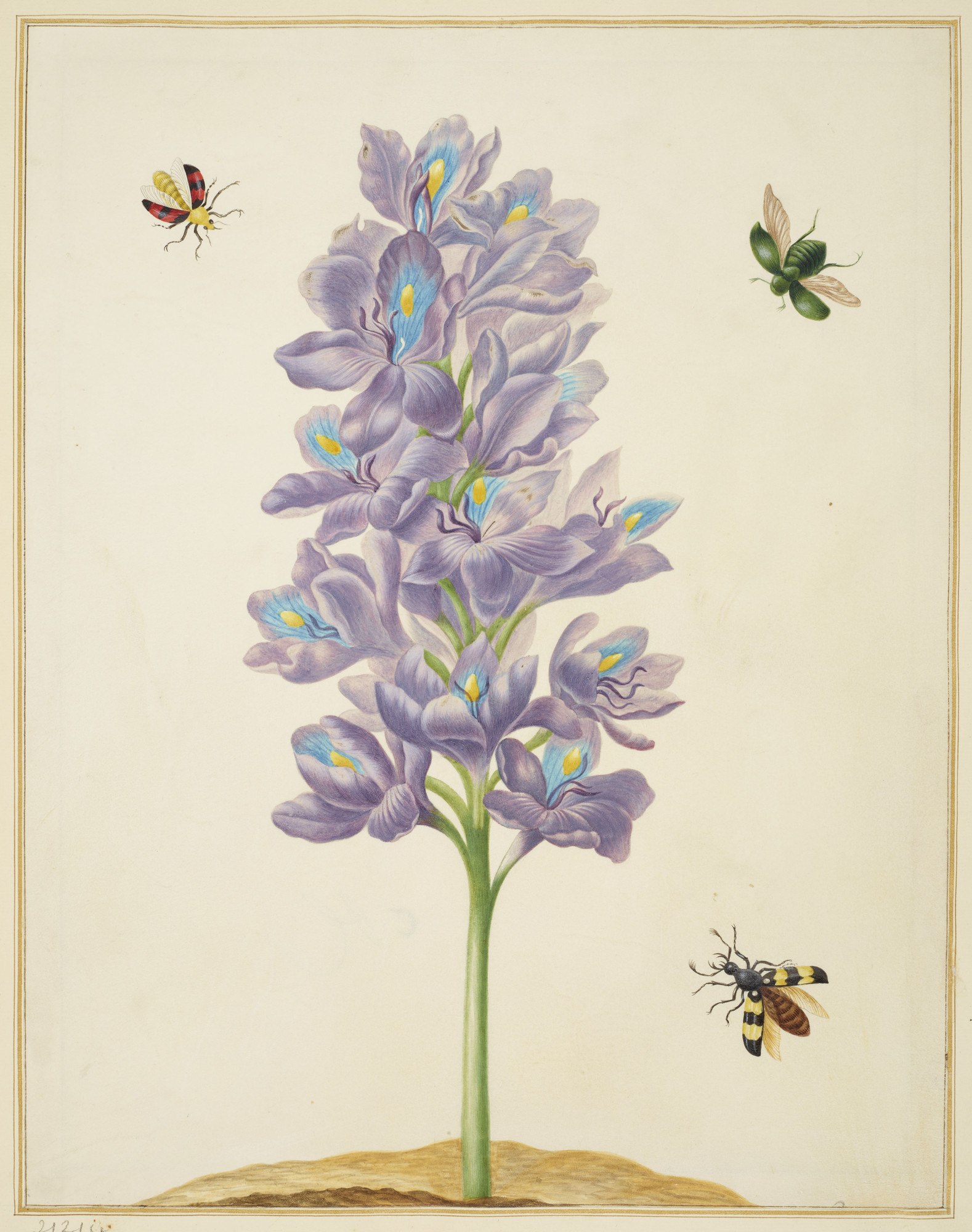
“Plate 1: Papilio Ajax” from “Der Raupen wunderbare Verwandlung und sonderbare Blumen-nahrung” (1679):
As one of the plates from her earlier work on caterpillars and their transformations, “Der Raupen wunderbare Verwandlung und sonderbare Blumen-nahrung,” this illustration exemplifies Merian’s contribution to the understanding of insect life cycles. The detailed depiction of Papilio Ajax, a butterfly species, showcases Merian’s ability to capture the intricacies of the natural world through her illustrations. This particular plate is a testament to her commitment to scientific accuracy and artistic elegance.
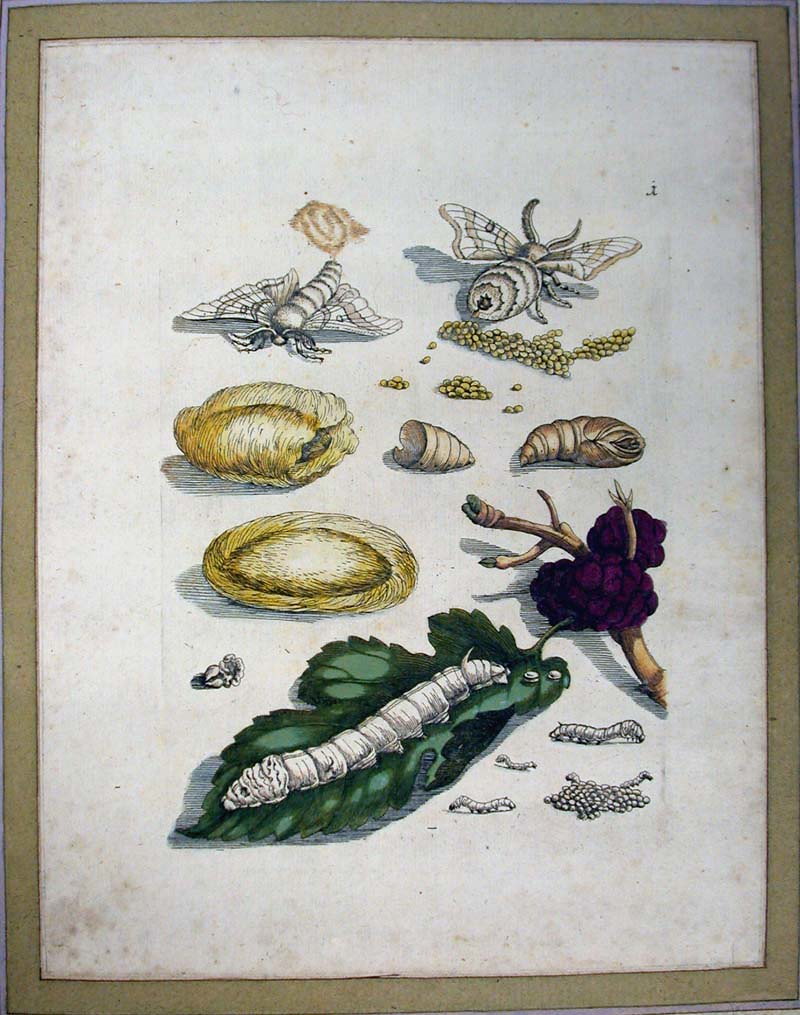
Maria Sibylla Merian’s life was shaped by a passion for the natural world and a curiosity that led her to embark on scientific expeditions. Her upbringing in a family of artists and publishers, combined with her fascination with insects and plants, laid the groundwork for her pioneering contributions to both art and science.
Art enthusiasts and scientists alike can explore Maria Sibylla Merian’s contributions at various institutions, including the J. Paul Getty Museum in Los Angeles, the Rijksmuseum in Amsterdam, and other natural history museums with collections of her meticulously crafted illustrations.
Maria Sibylla Merian’s artistic legacy extends beyond the canvas, reaching into the realms of science and natural history. Her ability to blend artistic beauty with scientific accuracy has left an enduring impact on both disciplines. As we delve into her botanical and entomological masterpieces, we are invited to witness the extraordinary journey of a woman whose passion for the natural world paved the way for future generations of artists and scientists.
If you would like to receive a roundup of all of our blog posts once a week to keep you inspired in your inbox, why not sign up to our newsletter. You can access our sign up at the top of our page. If you are a London Art College student and you would like your artwork featured here, drop us a line at any time.

